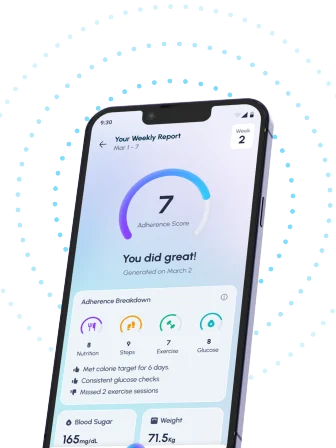For many people, grits are a classic comfort food, often enjoyed as a hearty breakfast or side dish. But if you have diabetes, you might wonder: Are grits safe to eat? The good news is that diabetics can eat grits, but with some important considerations. In this blog post, we’ll explore the impact of grits on blood sugar levels, provide expert advice, and offer practical tips to enjoy them while managing diabetes effectively.
What Are Grits and How Are They Made?
Grits are a type of ground cornmeal that’s typically served as a savory dish. They are common in Southern cuisine, often cooked with butter, cheese, or other seasonings. Grits are made by grinding dried corn kernels into a fine or coarse meal, and the final product can be either yellow or white, depending on the type of corn used.
While they are a staple in many households, especially in the South, grits are not the same as oatmeal or other whole grains in terms of nutritional content. Grits are usually processed and refined, which means they can have a higher glycemic index (GI) than less processed grains.
Glycemic Index and Its Impact on Blood Sugar
The glycemic index (GI) is a ranking of foods based on how they affect blood sugar levels. Foods with a high GI value can cause a rapid spike in blood sugar, which is especially concerning for people with diabetes. Refined grains, like those used in grits, tend to have a higher GI than whole grains.
- Low GI foods (under 55) cause a gradual increase in blood sugar.
- Medium GI foods (56–69) cause a moderate increase.
- High GI foods (70 and above) cause a rapid spike.
Unfortunately, grits have a high GI, typically ranging between 60 and 70, depending on how they’re processed and cooked. This means that, when eaten in large quantities, grits can raise blood sugar levels quickly, which can be problematic for diabetics.
Can Diabetics Eat Grits?
Yes, diabetics can eat grits, but it’s essential to be mindful of how they are prepared and consumed. The key lies in portion control and pairing grits with other foods to help moderate blood sugar spikes.
1. Portion Control Is Crucial
One of the most important factors for diabetics when eating any carbohydrate, including grits, is portion size. Eating large servings of high-GI foods like grits can lead to a sudden spike in blood sugar. To reduce this risk, it’s best to stick to smaller portions. A typical serving size of grits is about half a cup (cooked), which contains roughly 15–20 grams of carbohydrates.
2. Add Fiber and Protein
Pairing grits with high-fiber and high-protein foods can help slow down the absorption of sugar into the bloodstream. For instance, consider adding:
- Vegetables like spinach or tomatoes
- Lean proteins such as eggs, turkey bacon, or tofu
- Healthy fats like avocado or olive oil
These additions can make your meal more balanced, preventing blood sugar levels from spiking too quickly.
3. Opt for Stone Ground or Whole Grain Grits
If you have diabetes, it’s better to choose stone-ground grits over instant or quick-cooking varieties. Stone-ground grits are less processed and contain more fiber, which can help manage blood sugar levels. They have a slightly lower GI than their instant counterparts, making them a better choice for diabetics.
4. Consider Your Overall Carbohydrate Intake
While it’s okay to enjoy grits, it’s important to factor them into your overall daily carbohydrate intake. Diabetics should aim to spread their carbohydrate consumption throughout the day, avoiding large carb-heavy meals that can cause significant blood sugar fluctuations.
Read our blog – Can Diabetics Eat Raisins?
Real-Life Scenarios: How Diabetics Manage Grits in Their Diet
Scenario 1: Sarah’s Balanced Breakfast
Sarah, a 52-year-old woman with type 2 diabetes, loves a good southern breakfast, but she’s cautious about her blood sugar levels. On her weekend mornings, she enjoys a small serving of grits (about 1/2 cup) topped with a couple of scrambled eggs, some sautéed spinach, and a few slices of avocado. This combination gives her the fiber, protein, and healthy fats needed to keep her blood sugar steady. She enjoys the taste of grits without compromising her diabetes management.
Scenario 2: John’s Occasional Side Dish
John, a 63-year-old man with type 1 diabetes, often eats grits as a side dish at dinner. He’s learned to be mindful of the size of his serving, typically sticking to a 1/4-cup portion. He pairs his grits with grilled chicken and roasted vegetables to help balance the meal. By monitoring his blood sugar and checking after meals, John can enjoy grits without spiking his blood sugar levels.
Expert Contributions: Insights from Healthcare Professionals
According to Dr. Sarah Jenkins, an endocrinologist, “Managing diabetes isn’t just about avoiding certain foods; it’s about understanding how different foods impact blood sugar and making informed choices. Grits, while high on the glycemic index, can be incorporated into a diabetic meal plan when portioned correctly and paired with foods that provide fiber, protein, and healthy fats.”
Research also supports that fiber-rich foods like vegetables and whole grains can improve glycemic control in diabetics. By focusing on nutrient-dense additions to meals, diabetics can help mitigate the effects of high-GI foods like grits.
The American Diabetes Association (ADA) suggests:
- Choose whole grains whenever possible.
- Limit refined grains such as white rice and grits.
- Focus on balanced meals that include lean proteins, healthy fats, and plenty of vegetables.
For more information on managing diabetes through diet, visit the American Diabetes Association website. Learn more here.
Tips for Eating Grits with Diabetes
1. Avoid Instant Grits
Instant grits have been processed and stripped of much of their fiber. This makes them a poor choice for diabetics, as they can cause blood sugar spikes more rapidly than stone-ground grits.
2. Incorporate Healthy Add-Ins
For example, adding a tablespoon of chia seeds or flaxseeds can boost the fiber content of your meal. This can slow the absorption of carbohydrates and stabilize blood sugar levels.
3. Monitor Blood Sugar Levels
Testing blood sugar before and after meals can help diabetics understand how specific foods, including grits, affect their glucose levels. This practice allows for better meal planning and portion control.
4. Use Non-Dairy Milk Alternatives
If you’re making grits at home, consider cooking them with unsweetened almond milk or oat milk instead of regular cow’s milk to reduce sugar content.
Conclusion: Can Diabetics Eat Grits?
The answer is yes, diabetics can eat grits—but in moderation. Grits are a high-GI food that can cause blood sugar spikes if consumed in large portions. However, by controlling portion sizes, pairing them with protein and fiber, and opting for less-processed varieties like stone-ground grits, people with diabetes can enjoy this classic dish without sacrificing their health.
As always, it’s essential to consult with your healthcare provider to tailor your diet to your individual needs, especially when managing a condition like diabetes. By making mindful choices and practicing portion control, grits can fit into a balanced, diabetes-friendly diet.
Frequently Asked Questions (FAQs) on Can Diabetics Eat Grits?
1. Are grits good for diabetics?
Grits can be included in a diabetic diet, but it’s important to monitor portion sizes and pair them with fiber-rich and protein-packed foods to prevent blood sugar spikes.
2. What’s the best type of grits for diabetics?
Stone-ground grits are the best option because they are less processed and contain more fiber than instant or quick-cooking grits, which have a higher glycemic index.
3. Can I eat grits every day if I have diabetes?
While you can eat grits occasionally, it’s crucial to keep your portions small and balance them with other healthy foods. Eating grits every day might not be ideal due to their high glycemic index.
4. Can I eat flavored grits with diabetes?
Flavored grits often contain added sugar, which can lead to spikes in blood sugar levels. It’s better to stick with plain grits and add healthy toppings like vegetables, eggs, or cheese.
5. How can I reduce the glycemic index of grits?
You can reduce the glycemic index by choosing stone-ground grits, adding fiber-rich foods, and pairing them with proteins and healthy fats. Avoid adding sugar or high-calorie toppings.
For more tips on diabetes management, visit the American Diabetes Association.




